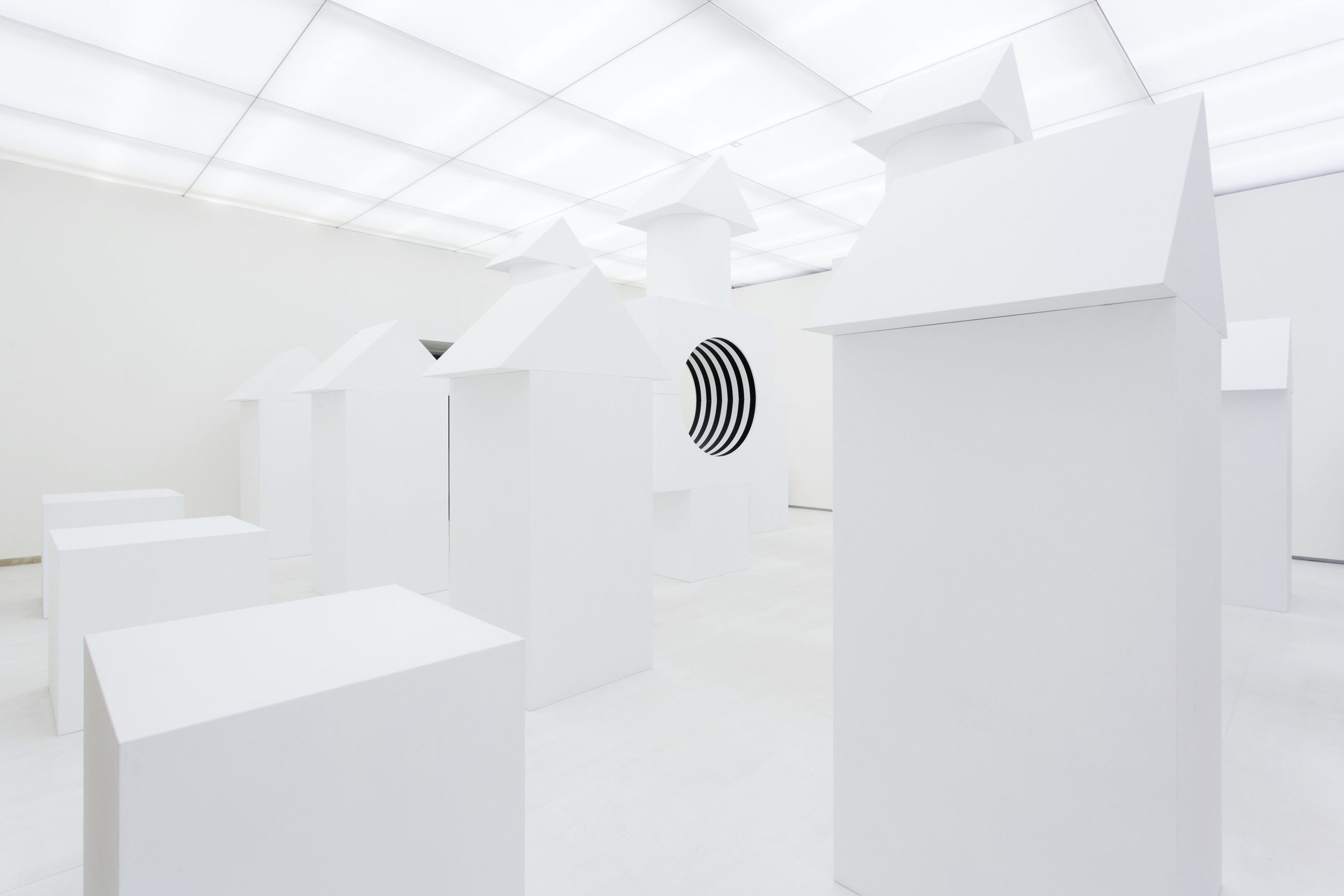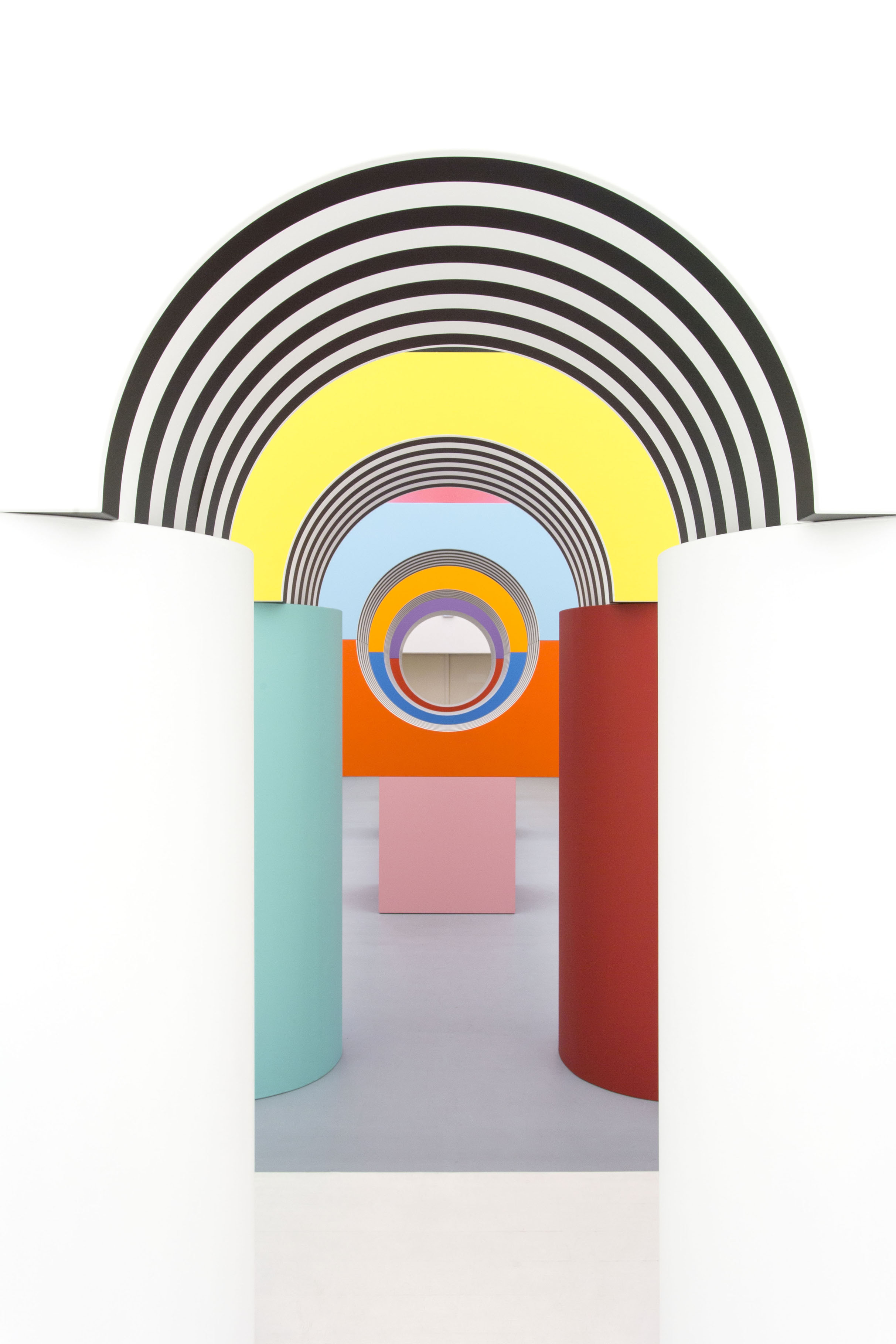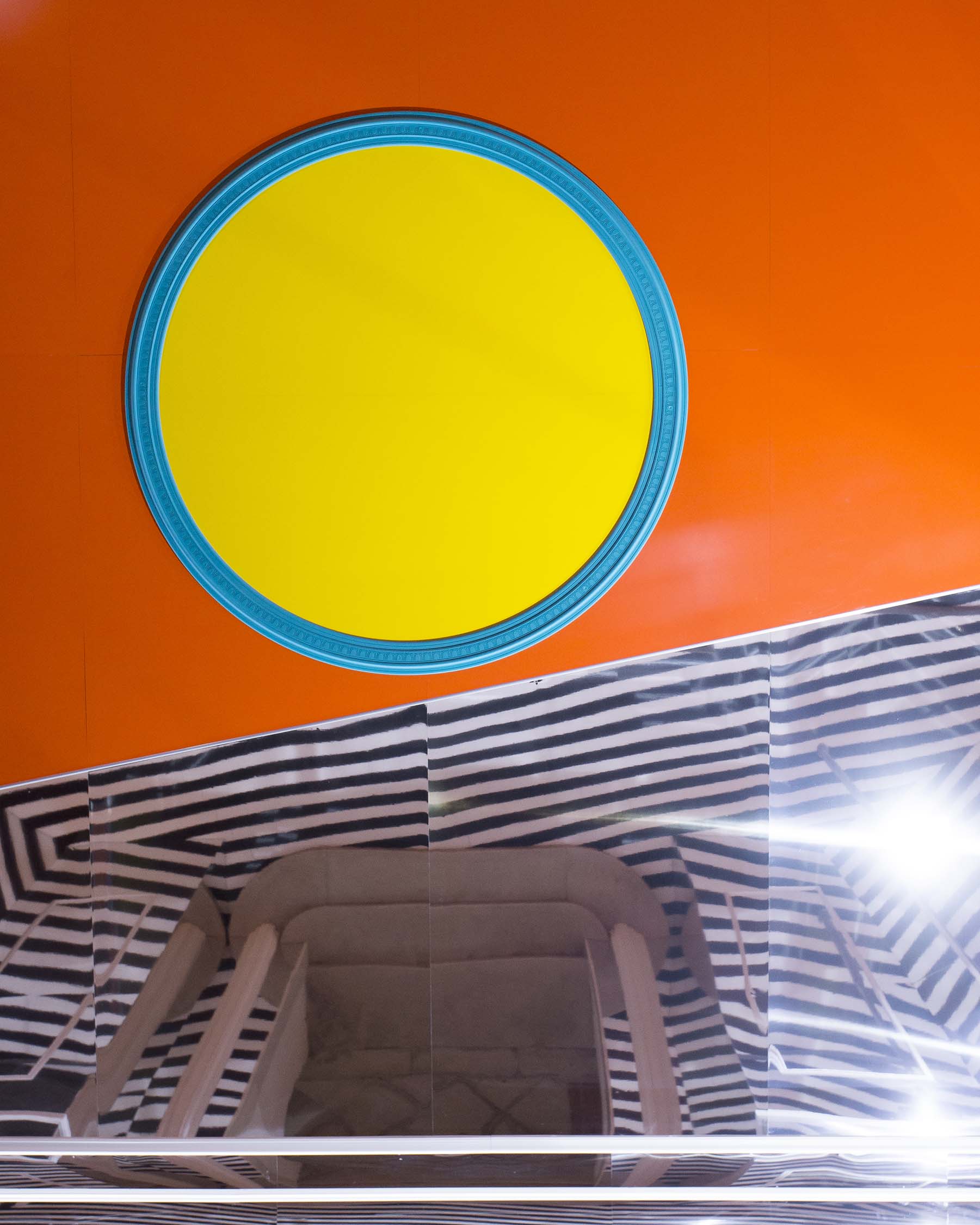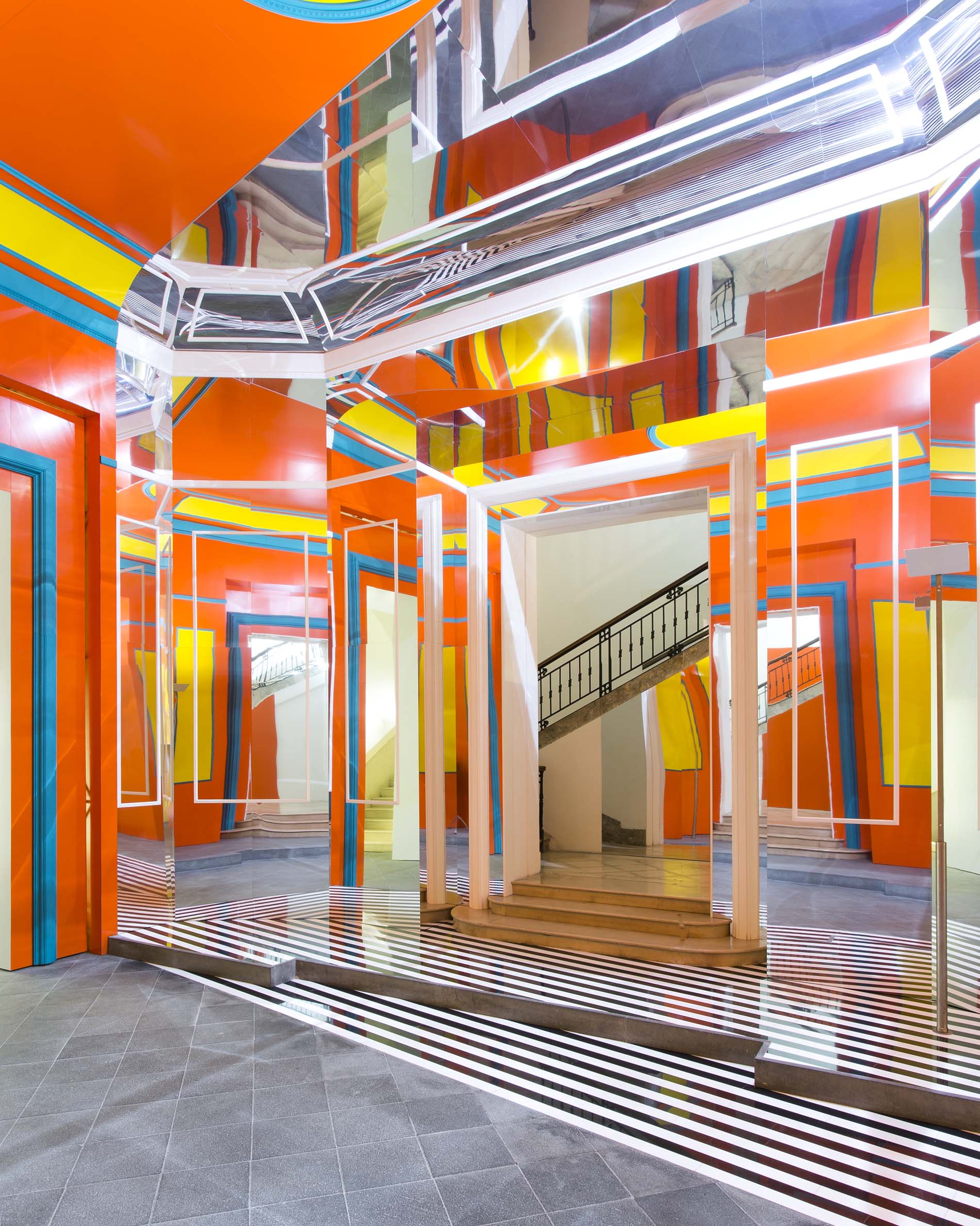Daniel Buren
Like Child’s Play. Work in situ #1
April – August 2015
Madre Museum, Naples, Italy
Like Child’s Play. Work in situ #1 invites visitors into a play area made of one hundred geometric modules inspired by the famous wooden blocks of the German theorist Friedrich Wilhelm August Fröbel. The original wooden play set made up of spheres, cubes and cylinders has been augmented to an environmental scale, stimulating ideas of perception, tactile exercises, construction and deconstruction. On entering the installation viewers are faced with a potential reality, which enables them to rebuild the world around them with a renewed sense of wonder and childlike amazement.
While working in collaboration with Patrick Bouchain, the work presents a subtle inner dialogue with architecture, which becomes almost living and performative, and examines in a physical way the relationship between object, viewer, and the space in which they exist. Visitors are able to walk inside a city made up of hypnotic circles, coloured arches, cylindrical towers, square bases and triangular pediments arranged symmetrically as if part of the museum’s architecture. This composite landscape invites a gradually articulating stroll though colour and space that engages in conversations between the various contexts and the work of art, the existing architecture and new productions, and the public and the artist. Here, Buren masterfully configures a balanced and comprehensive jeu d’enfant (“child’s play”).

















Axis/ Out of Axis. Work in situ #2
October 2015 – July 2016
Madre Museum, Naples, Italy
Axis/Out of Axis. Work in Situ #2 is a visionary Buren intervention which completely modifies the perception of the entrance of Madre Museum. By using his typical black and white stripes 8.7cm in thickness on the floor, the artist suggests a potential perspective axis shift , so that the museum emerges from itself to embrace the city around it. A structured pavilion consisting of coloured surfaces and mirrors reverberates and enhances this new isometric imagery. As a result, Buren acts on the viewer’s standpoint, creating an area of perceptual and cognitive mobility, of vision, mediation, mutual attraction and communion, in which interior and exterior, museum and community penetrate into each other and merge. Each visitor is thus welcomed and invited, literally at a glance, to be part of the work, to actively participate in its celebrating the relationship between the institutional sphere and public dynamics.





















